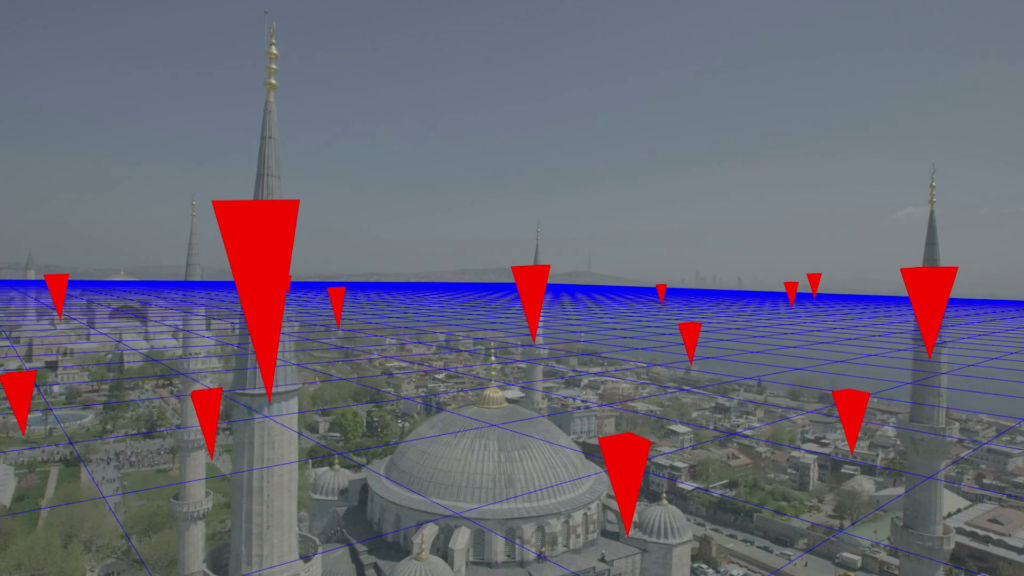
Introduction
In the world of visual effects, few processes are as critical—and as invisible—as Accurate Camera Tracking. It’s the technical backbone that allows computer-generated elements to blend seamlessly into live-action footage. Without a reliable track, even the most beautifully rendered 3D model will slide, drift, or break believability.
At 3D Services India, with over 15 years of experience handling complex feature film sequences, we’ve seen firsthand how meticulous camera tracking transforms good VFX into flawless visual storytelling. This guide outlines the essential principles to keep in mind to ensure your tracks are precise, stable, and production-ready.
1. The Plate Is Everything
Your camera track is only as strong as the footage it’s based on. Proper planning during the shoot makes all the difference. Whenever possible, use tracking markers on set to provide consistent reference points. A higher shutter speed helps minimize motion blur, which often confuses tracking software. Always capture footage at the highest resolution and bit depth available—clean, sharp plates make solving far easier and far more accurate.
2. Choose Feature Points Carefully
Software depends on high-contrast, clearly defined features to generate a solid track. While automatic tracking is powerful, manual point selection often produces superior results. Look for areas with strong textures—cracks, edges, or patterns—that remain consistent across frames. Avoid reflective or moving surfaces like water, glass, or shiny metal, which can change appearance under different lighting. Thoughtful feature point selection is the first step toward accurate camera tracking.
3. Treat the Solve as a Starting Point
Never assume the software’s initial solve is final. It’s simply a rough pass. Always check error metrics and scrutinize the points—any with high error should be deleted, adjusted, or re-tracked. Iterating on the solve, refining problem areas, and validating stability ensures a robust 3D camera solution. Great tracks are built on careful evaluation, not blind trust in automation.
4. Define Your Ground Plane and Scale
To integrate CG objects convincingly, the virtual 3D space must align with the real-world environment. That means defining a ground plane, an origin point, and a reliable scale. By measuring a known distance in the shot—like the width of a doorway—you can establish real-world proportions. This step gives meaning to the track and ensures digital objects feel grounded instead of floating unnaturally.
5. Refine Relentlessly
The difference between a passable track and a flawless one lies in refinement. Use your software’s tools to smooth out irregularities, fix drifting points, and adjust errors. Often, this involves painstaking frame-by-frame correction on troublesome areas. It’s tedious but essential—especially for shots with fast camera moves, motion blur, or difficult lighting. Refinement is where true tracking expertise shines.
6. Test with a CG Object
The most reliable way to evaluate your track is practical testing. Drop a simple CG object, like a cube or sphere, into the scene and play back the animation. If the object feels glued to the plate—without sliding or drifting—you know your track is solid. If not, it’s back to refining until it sticks naturally. This step saves countless hours later in the pipeline by catching errors early.
Conclusion
Accurate Camera Tracking is the unsung hero of seamless VFX. It requires precision, patience, and a deep understanding of both the software and real-world cinematography. By carefully planning your shoot, selecting strong feature points, refining your solve, and testing thoroughly, you can create rock-solid tracks that make compositing effortless.
For challenging shots with heavy motion blur, minimal features, or unstable footage, experience makes all the difference. At 3D Services India, our team has perfected the art of camera tracking across some of the most demanding film projects. When precision is non-negotiable, trust us to lock down the track and set the foundation for flawless visual effects.

